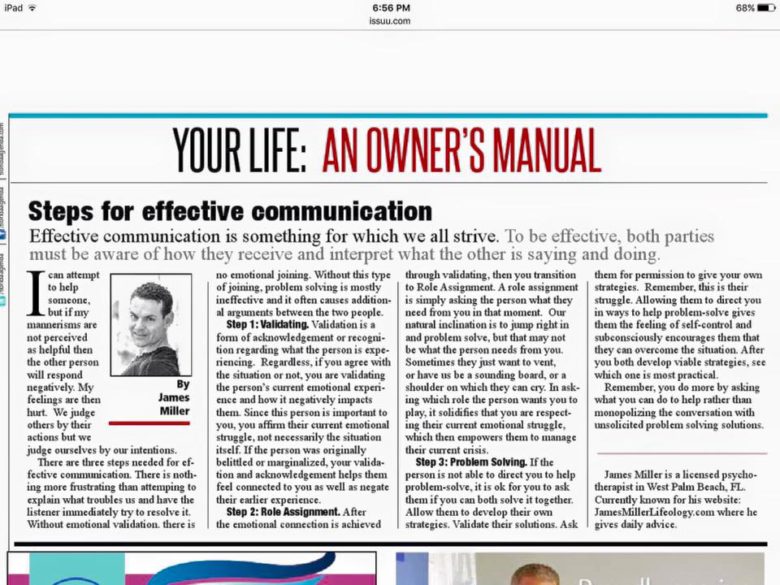Effective communication is something for which we all strive. To be effective, both parties must be aware of how they receive and interpret what the other is saying and doing. I can attempt to help someone, but if my mannerisms are not seen as helpful, then the other person will respond negatively. My feelings are then hurt.
We judge others by their actions, but we judge ourselves by our intentions.
There are three steps needed for effective communication.
There is nothing more frustrating than when we are explaining what troubles us, and the listener tries to resolve it immediately. Without validating your experience, there is no emotional connection. Without this type of connection, problem-solving is mostly ineffective, and it often causes additional arguments between the two people.
Step 1: Validating.
Validation is a form of acknowledgment or recognition regarding what the person is experiencing. Regardless, if you agree with the situation or not, you are validating the person’s current emotional experience and how it negatively impacts them. Since this person is important to you, you affirm their current emotional struggle, not necessarily the situation itself. If the person was initially belittled or marginalized, then by you validating and acknowledging their current emotional struggle, it helps them feel connected to you. It quickly helps them feel as if someone understands them.
Step 2: Role Assignment.
After the emotional connection is achieved, through validating, then you transition to Role Assignment. A role assignment is merely asking the person what they need from you at that moment. Our natural inclination is to jump right in and problem solve, but that may not be what the person needs from us. Sometimes they want to vent or have us be a sounding board or a shoulder on which they can cry. Asking which role the person wants you to play solidifies that you are respecting their needs and not assuming. This empowers them to start to problem-solve their current crisis.
Step 3: Problem Solving.
If the person is not able to direct you to help problem solve, it is ok for you to ask them if you can both solve it together. Allow them to develop their strategies. Validate their solutions. Ask them for permission to give your approach. Remember, this is their struggle. Allowing them to direct you in ways to help problem solve gives them the feeling of self-control. It subconsciously encourages them that they can overcome the situation. After you both develop viable strategies, see which one is most practical.
We are always communicating but often do not realize how ineffective it can be. The foundation for any healthy relationship is validation and affirmation. When you incorporate these into your conversations and actions, you will see how well you both interact with each other. Your emotional connection will allow you to overlook previous frustrations. You will trust each other more strongly and know the other person is on your side regardless if they agree with you. Your feelings will be safe, and you will both receive mutual respect.
Remember, you do more by asking what you can do to help rather than monopolizing the conversation with unasked for problem-solving solutions.


 We all get overwhelmed and sometimes don’t know what to do. LIFE LESSONS is your new “go-to” book to help you navigate life.
We all get overwhelmed and sometimes don’t know what to do. LIFE LESSONS is your new “go-to” book to help you navigate life.